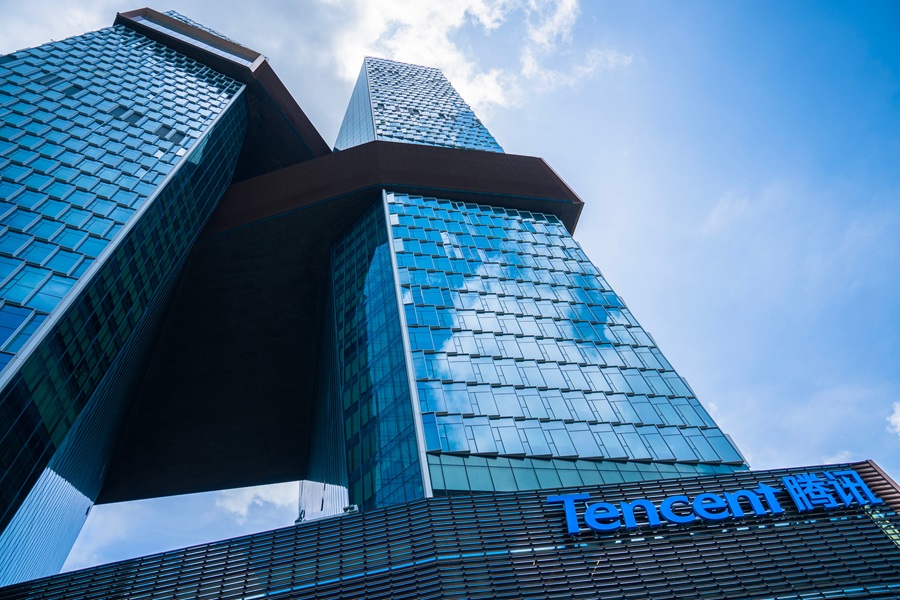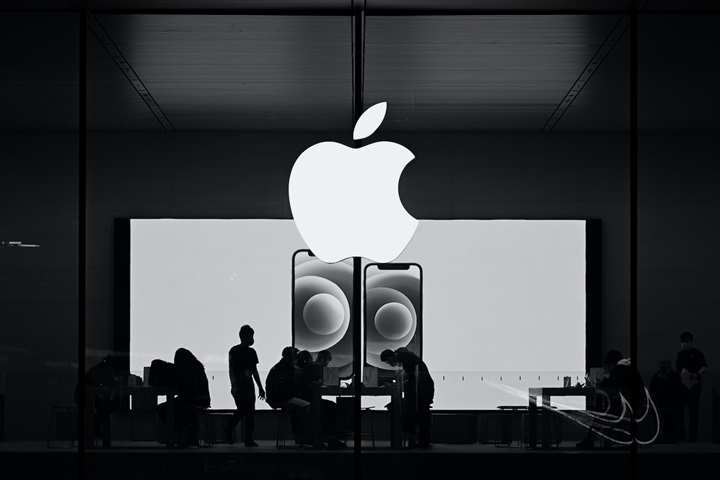Today, the 2023 Kantar BrandZ China Gala Event was successfully held in Shanghai with the theme, ‘Brand Elevation for a Sustainable Future’. At the event, Kantar released the Kantar BrandZ Top 100 Most Valuable Chinese Brands Ranking and Report 2023.
Chinese brands have excelled again this year as the total value of the Kantar BrandZ Top 100 Most Valuable Chinese Brands reached over $1 trillion in brand value, despite economic uncertainty in China and around the world. This is a drop of 19% versus the previous year, but 13% higher than the ranking’s total value in 2019 before the impact of the COVID-19 pandemic. Strong brands are consistently leading this growth during a period of change, while the focus now is on brand elevation for a sustainable future.
Tencent (No. 1; $144.1bn) retains the top spot for the third year running, by driving its core services to create value for users, industry, and society over the past year. Alibaba (No.2; $90.2bn), Moutai (No.3; $88.4bn) and Douyin (No.4; $46.6bn) maintain their 2022 positions. China Mobile (No.5; $31.7bn) enters the top 5 for the first time since 2019, increasing its brand value by 38% through diversification into business services and investing in new technology infrastructure such as 5G and cloud services. As the only IoT ecosystem brand in the ranking, Haier (No. 8; $27.0bn) has made the Kantar BrandZ China Top 100 for the past 13 years, and continues to innovate, driving new experiences and new value for its customers.
Kantar BrandZ Top 10 Most Valuable Chinese Brands 2023
| Rank 2023 | Brand | Category | Brand Value 2023 ($M US) | Rank Change vs 2022 |
| 1 | Tencent | Business Technology & Services Platforms / Media & Entertainment | 144,109 | 0 |
| 2 | Alibaba | Retail | 90,186 | 0 |
| 3 | Moutai | Alcohol | 88,427 | 0 |
| 4 | Douyin | Media & Entertainment | 46,641 | 0 |
| 5 | China Mobile | Telecom Providers | 31,676 | 6 |
| 6 | Meituan | Consumer Technology & Services Platforms | 30,517 | -1 |
| 7 | Huawei | Consumer Technology & Services Platforms | 27,053 | 1 |
| 8 | Haier | IoT Ecosystem | 26,985 | 1 |
| 9 | ICBC | Financial Services | 26,512 | -3 |
| 10 | JD | Retail | 24,759 | -3 |
Chinese brands have a unique demographic advantage. They can directly access the world’s most attractive and dynamic consumer market and Chinese brands will also enjoy expanded access to consumers abroad, thanks to China’s ongoing Belt and Road Initiative. The evidence today suggests that Chinese brands will not only survive but thrive in the future. At Kantar, with our mission to shape the brands of tomorrow, we will continue betting on strong brands with the three essential qualities of being meaningful, different and salient, and record and witness their sustainable growth in the era of elevation.
Strong performance of newcomers and re-entries
This year, 11 new brands joined the China Top 100. These newcomers hail from nine different categories, proving that there are still many different routes to building a well-known brand in today’s China. Global fashion brand Shein (No.12; $21.6bn) was the highest-placed newcomer from six brands making their first-ever China Top 100 debut, alongside five brands re-entering the ranking.
Newcomers and Re-entries: Kantar BrandZ Most Valuable Chinese Brands 2023
| Rank 2023 | Brand | Brand Value 2023 ($M US) | New/Re-entry | Category |
| 12 | Shein | 21580 | NEW | Apparel |
| 66 | China Everbright Bank | 2720 | RE-ENTRY | Financial Services |
| 78 | Harbin Beeri | 2305 | RE-ENTRY | Alcohol |
| 82 | Hongqi | 2144 | NEW | Automotive |
| 85 | Luckin Coffee | 2034 | NEW | Fast Food |
| 89 | WeDoctor | 1717 | NEW | Health Care |
| 90 | China Unicom | 1668 | RE-ENTRY | Telecom Providers |
| 92 | China CITIC Bank | IoT 1603 | RE-ENTRY | Financial Services |
| 96 | CR Sanjiu | 1559 | RE-ENTRY | Health Care |
| 98 | Master Kong | 1486 | NEW | Food & Beverages |
| 100 | Proya | 1423 | NEW | Personal Care |
Rich mix of categories in the Top 100
The largest category by total brand value was Media and Entertainment ($241.4bn), followed by Retail ($136.7bn). This year, banks and insurance brands combined to form a new category, Financial Services, the third largest in brand value ($134.2bn) and featuring 14 brands in the Top 100, the most of any category. Driven by Chinese culture and tradition and diverse drinking occasions, alcohol also remains strong this year with 11 brands in the ranking. Chinese Baijiu brands Moutai and Wu Liang Ye (No.24; $10.3bn) led in brand value, while one of the fastest risers, Tsingtao ($3.2bn) jumped 16 places to No.58.
These remain disruptive times, as evidenced by developments like the swift rise of natural language AI processing, the booming popularity of short-form video platforms, and consumers’ growing embrace of electric vehicles. It’s a business environment characterised by extreme innovation, and rapidly evolving marketing rules: these days, consumer experience, and performance advertising are swiftly converging into one digital experience. Therefore, investment in innovation is important more than ever. For example, intelligent technology brand TCL (No. 83; $2.1 billion) is an example model company with the courage to change and transform. For 42 years since founding, TCL’s scope of business is continuously expanding, from intelligent terminal products and display panels to new energy photovoltaics and other fields. Focusing on globalisation, technology, and human-centric brand strategy, TCL has always maintained strong competitiveness in the global market.
The most explosive growth category, Apparel, grew 327% in brand value with brands achieving impressive results through a combination of strong brand identity, localisation and leveraging cultural credentials. In particular, Anta (No.46; $3.7bn) and Li-Ning (No.51; $3.5bn) benefitted from a backlash against foreign athletics labels to maintain strong growth.
With travel brands also among the fastest risers this year, travel services showed strong signs of recovery since the pandemic. Booking site Ctrip (No.52; $3.5bn) grew 31% rising 25 places, while China Southern Airlines (No.42; $4.4bn) grew its brand value by 22%.
This year’s ranking also shows signs of renewed growth across other categories, including Home Appliances and Personal Care. Home Appliances brands like Gree (No.67; $2.7bn) and Midea (No.38; $5.2bn) are already climbing back to pre-pandemic levels, but are expected to accelerate future growth through a combination of premium innovation, expansion into new industries, and expansion into new markets offering opportunities overseas.
In the personal care category, the shift towards selling online, especially via KOL and KOC livestreams, is expected to deliver growth in 2023. But brands will need to meet consumer demand for natural ingredients, as well as innovating to meet the functional and emotional needs of customers. Brands will also find growth in focusing on a few hero products.
Other highlights from the Kantar BrandZ Top 100 Most Valuable Chinese Brands report include:
- The AI effect – AI and machine learning have already been a driver of innovation and brand growth for Chinese companies and many Chinese brands have developed AI models of their own. Differentiated offerings and user experience will be key to success in the future. Brands that have performed outstandingly in this field include iFLYTEK (No.43; $4.3bn), a leading artificial intelligence enterprise responsible for the establishment of the State Key Laboratory of Cognitive Intelligence, the National Engineering Research Center for Speech and Language Information Processing, and a new generation of open and innovative artificial intelligence platforms, and Bilibili (No.63; $2.8bn), a high-quality content platform beloved by Gen Z in China.
- EVs will drive sustainability – With four automotive brands in this year’s China Top 100, the focus is on building affordable and innovative new energy vehicles for both the Chinese market and overseas. Category leader BYD (No.27; $9.1bn) is building its first overseas factory in Thailand and plans to open retail channels in countries like Brazil, Norway, and Australia. The dark horse, Li (No. 65, $2.7bn) represents a new force in the industry that cannot be ignored. Interestingly, brand leaders from the Consumer Technology & Services Platforms category, including Huawei (No.7; $27.1bn) and Xiaomi (No.25; $10.1bn) also see new energy vehicles as a way to branch out into new areas.
- Spending power of the silver generation – brands are focusing more on China’s ‘silver generation’ which offers opportunities for stable growth in uncertain times. These older consumers – the number of Chinese citizens aged 60 and above will exceed 300m by 2025 - have demonstrated strong spending power and become increasingly digitally-savvy since the pandemic with many regularly using short form video platforms like Douyin and spending more time in front of screens than youngsters.
- Low-tier pride — In the past, younger consumers have mostly consumed culture from bigger cities and foreign countries. Now, the rise of short-form video platforms has created a new class of influencers that proudly represents China’s smaller cities and towns. Some of these content creators have remained in their hometowns, where they share music or fashion rooted in their local contexts; others share stories of how they’ve retained their identities even when moving to big cities for higher education, presenting an opportunity for brands to tap into producing more regionally targeted content.
The Kantar BrandZ Top 100 Most Valuable Chinese Brands ranking, report and extensive analysis are available now at www.kantar.com/campaigns/brandz/china
For an overarching view of brand performance, Kantar has launched a new, free interactive tool powered by BrandZ’s wealth of data and Meaningful Different Salient framework. Kantar BrandSnapshot delivers intelligence on 10,000 brands in 40+ markets, offering a quick read on a brand’s performance in a category. Explore for free on Kantar Marketplace today.





